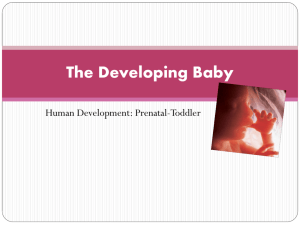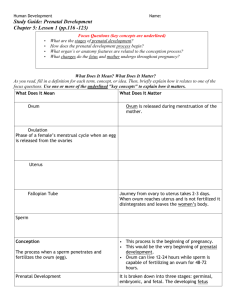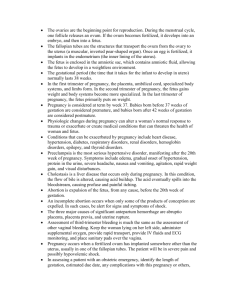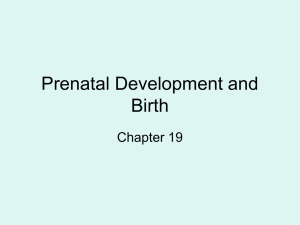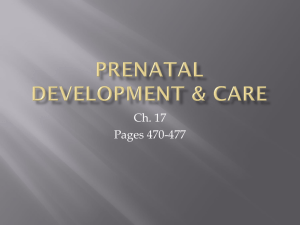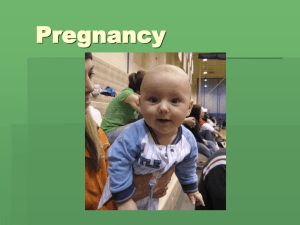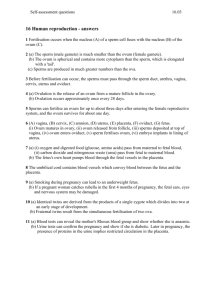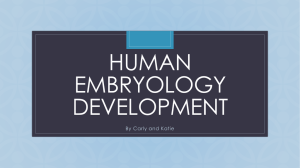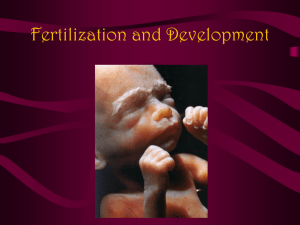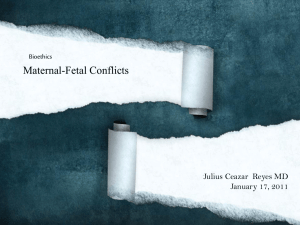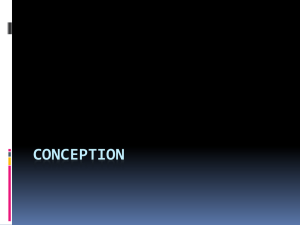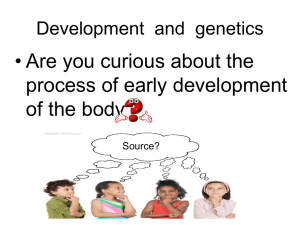Child Development Name: Prenatal care test Hour: Matching: Match
advertisement
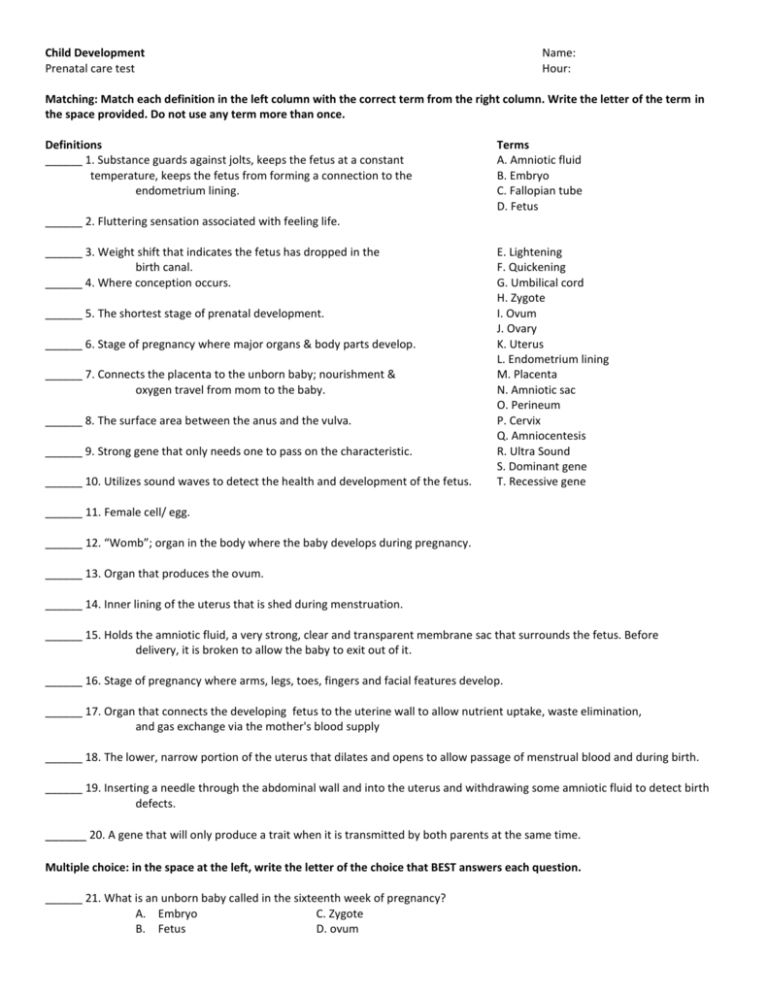
Child Development Prenatal care test Name: Hour: Matching: Match each definition in the left column with the correct term from the right column. Write the letter of the term in the space provided. Do not use any term more than once. Definitions ______ 1. Substance guards against jolts, keeps the fetus at a constant temperature, keeps the fetus from forming a connection to the endometrium lining. Terms A. Amniotic fluid B. Embryo C. Fallopian tube D. Fetus ______ 2. Fluttering sensation associated with feeling life. ______ 3. Weight shift that indicates the fetus has dropped in the birth canal. ______ 4. Where conception occurs. ______ 5. The shortest stage of prenatal development. ______ 6. Stage of pregnancy where major organs & body parts develop. ______ 7. Connects the placenta to the unborn baby; nourishment & oxygen travel from mom to the baby. ______ 8. The surface area between the anus and the vulva. ______ 9. Strong gene that only needs one to pass on the characteristic. ______ 10. Utilizes sound waves to detect the health and development of the fetus. E. Lightening F. Quickening G. Umbilical cord H. Zygote I. Ovum J. Ovary K. Uterus L. Endometrium lining M. Placenta N. Amniotic sac O. Perineum P. Cervix Q. Amniocentesis R. Ultra Sound S. Dominant gene T. Recessive gene ______ 11. Female cell/ egg. ______ 12. “Womb”; organ in the body where the baby develops during pregnancy. ______ 13. Organ that produces the ovum. ______ 14. Inner lining of the uterus that is shed during menstruation. ______ 15. Holds the amniotic fluid, a very strong, clear and transparent membrane sac that surrounds the fetus. Before delivery, it is broken to allow the baby to exit out of it. ______ 16. Stage of pregnancy where arms, legs, toes, fingers and facial features develop. ______ 17. Organ that connects the developing fetus to the uterine wall to allow nutrient uptake, waste elimination, and gas exchange via the mother's blood supply ______ 18. The lower, narrow portion of the uterus that dilates and opens to allow passage of menstrual blood and during birth. ______ 19. Inserting a needle through the abdominal wall and into the uterus and withdrawing some amniotic fluid to detect birth defects. ______ 20. A gene that will only produce a trait when it is transmitted by both parents at the same time. Multiple choice: in the space at the left, write the letter of the choice that BEST answers each question. ______ 21. What is an unborn baby called in the sixteenth week of pregnancy? A. Embryo C. Zygote B. Fetus D. ovum ______ 22. What is formed when the sperm and ovum unite? A. B. Zygote Embryo C. fetus D. Chromosome ______ 23. Which is NOT a sign of early pregnancy? A. B. Morning sickness False labor pains C. fatigue D. breast swelling ______ 24. When are hereditary traits determined? A. B. At birth As the fetus develops C. during adolescence D. at conception ______ 25. Which option would not help an infertile couple when the women’s Fallopian tubes are damaged? A. B. Ovum transfer Adoption C. artificial insemination D. in vitro fertilization ______ 26. Which is true of fraternal twins? A. B. They look alike They may be the same sex C. the same egg divided D. the same zygote divided ______ 27. All of the following are common discomforts of pregnancy EXCEPT: A. B. Shortness of breath Little urination C. Varicose veins D. Lower back pain ______ 28. The joining of the sperm & ovum is called: A. B. Lightening Quickening C. Conception D. Ovulation ______ 29. What is it called when the ovum is released to the fallopian tube? A. B. Lightening Quickening C. Pregnancy D. Ovulation ______ 30. Which is not an environmental hazard during pregnancy? A. B. Smoking Defective gene C. Alcohol D. X-ray ______ 31. How much alcohol can a pregnant woman drink without risking harm to the fetus? A. B. 1 oz. per week None C. no limit D. 1 oz. per day ______ 32. How many chromosomes are contributed by each mature sperm and egg cell? A. B. 14 23 C. 4 D. 46 ______ 33. What is the chromosome combination for a GIRL? A. B. XX XS C. XY D. XxX ______ 34. What is the chromosome combination for a BOY? A. B. XX XS C. XY D. XxX ______ 35. What birth defect is a condition that is present at birth (heart defect, neural tube defect or having an extra body part)? A. Multi-factorial inheritance C. Metabolic disorder B. Chromosomal error D. Congenital malformation ______ 36. What birth defect occurs when the fertilized egg cell contains chromosomes in an abnormal structure, number or arrangement? A. Multi-factorial inheritance C. Metabolic disorder B. Chromosomal error D. Congenital malformation
